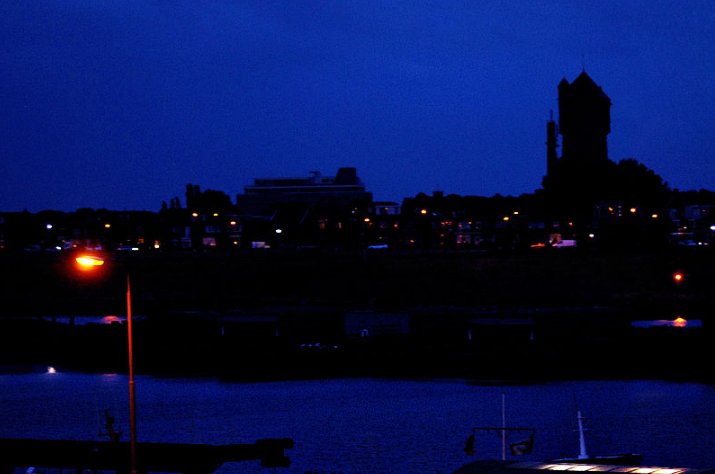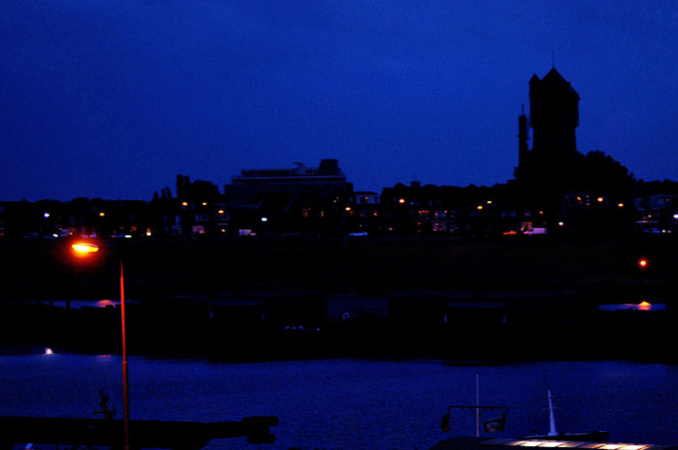Cheap, stable electricity produced by hydropower, as well as ice water, which can be used to cool computers, provides economic benefits for Scandinavian objects near the Arctic Circle. So it's no wonder that Google, Microsoft and Facebook have chosen northern Scandinavian sites to host huge new data centers.
In addition to reducing costs, these data centers are among the most "green" in the world. All produced energy is clean, cool air makes air conditioning unnecessary, and the Arctic Ocean is a natural refrigerant.
Google has already invested $ 350 million in a data center based on former production site of Finnish timber company Stora Enso in Hamina, south-eastern Finland. Google bought the site in 2009 and turned itthe place into one of the most efficient data centers. The company took benefits of the location on the Finnish coast, which helps cool servers with cool sea water.
The Barents Region is important for placing huge amounts of information. The cold climate was the main factor to choose the north of Sweden as a place to host the second major server center of the giant Facebook social network in 2013. Facebook’s server feeds electricity from renewable sources, in this case - HPP on the Luleälven River.
The largest turbine generator at the Harsprognet station is called Gerhard. It is capable to process almost 500 cu. m of water per second, which makes the turbine the largest and most powerful generator in Sweden. This unit was put into operation in 1980. Its output power (475 MW) is similar to the output power of the Ringhals nuclear power plant, which also belongs to Vattenfall company.
In May, a huge powerful underground commercial data center Lefdal Mine Datacenter with an area of 120 thousand square meters was opened in Norway. And this is only the first phase of the project. In the future, the data center will expand actively. It is expected that the first customers will place their IT equipment inside this server farm in the third quarter of 2017.
The data center is located inside an old mine. It was designed as a modular, scalable and secure structure built underground. Lefdal Mine Datacenter, located in the west of Norway, consists of six underground levels divided into 75 separate rooms. The data center’s first clients were companies such as Innovo Cloud, LocalHost AS and Fortuitus AG. List of other tenants also includes IBM and German industrial conglomerate Friedhelm LOH Group.
According to the engineers, the data center is characterized by one of the lowest indicators of the total cost of ownership in Europe. They also say that customers can reduce operating costs by 50% by moving their IT equipment to the Lefdal Mine Datacenter, compared to other data centers. The reasons for such considerable savings are, among other things, the low cost of electricity in Norway and use of electricity from 100% renewable energy sources provided by hydroelectric power stations and windmills.
Thanks to hydroelectricity and electricity from the wind power generated near the data center, its capacity can be brought up to 200 MW after it is completely filled with client equipment.
The data center industry in Finland has the potential to expand more than threefold in subsequent years, says Copenhagen Economics consulting agency in a report.
At present, this sector of the economy includes 11,200 jobs and annually contributes 800 million euros to the country's GDP. However, according to the report, the number of jobs could increase to 32,900 by 2025, and the contribution to GDP could rise up to 2.3 billion euros.
The report notes that Finland has a number of strategic advantages for creating a reliable data center industry: a separate strategy for attracting foreign investment in the sector, good international communications in the field of information exchange, a stable and advanced regulatory environment, extremely reliable energy supply and a suitable climate. The country is recommended to take measures to reduce energy costs and further increase the share of renewable energy sources in the total energy supply.
source: bloomberg.com
In addition to reducing costs, these data centers are among the most "green" in the world. All produced energy is clean, cool air makes air conditioning unnecessary, and the Arctic Ocean is a natural refrigerant.
Google has already invested $ 350 million in a data center based on former production site of Finnish timber company Stora Enso in Hamina, south-eastern Finland. Google bought the site in 2009 and turned itthe place into one of the most efficient data centers. The company took benefits of the location on the Finnish coast, which helps cool servers with cool sea water.
The Barents Region is important for placing huge amounts of information. The cold climate was the main factor to choose the north of Sweden as a place to host the second major server center of the giant Facebook social network in 2013. Facebook’s server feeds electricity from renewable sources, in this case - HPP on the Luleälven River.
The largest turbine generator at the Harsprognet station is called Gerhard. It is capable to process almost 500 cu. m of water per second, which makes the turbine the largest and most powerful generator in Sweden. This unit was put into operation in 1980. Its output power (475 MW) is similar to the output power of the Ringhals nuclear power plant, which also belongs to Vattenfall company.
In May, a huge powerful underground commercial data center Lefdal Mine Datacenter with an area of 120 thousand square meters was opened in Norway. And this is only the first phase of the project. In the future, the data center will expand actively. It is expected that the first customers will place their IT equipment inside this server farm in the third quarter of 2017.
The data center is located inside an old mine. It was designed as a modular, scalable and secure structure built underground. Lefdal Mine Datacenter, located in the west of Norway, consists of six underground levels divided into 75 separate rooms. The data center’s first clients were companies such as Innovo Cloud, LocalHost AS and Fortuitus AG. List of other tenants also includes IBM and German industrial conglomerate Friedhelm LOH Group.
According to the engineers, the data center is characterized by one of the lowest indicators of the total cost of ownership in Europe. They also say that customers can reduce operating costs by 50% by moving their IT equipment to the Lefdal Mine Datacenter, compared to other data centers. The reasons for such considerable savings are, among other things, the low cost of electricity in Norway and use of electricity from 100% renewable energy sources provided by hydroelectric power stations and windmills.
Thanks to hydroelectricity and electricity from the wind power generated near the data center, its capacity can be brought up to 200 MW after it is completely filled with client equipment.
The data center industry in Finland has the potential to expand more than threefold in subsequent years, says Copenhagen Economics consulting agency in a report.
At present, this sector of the economy includes 11,200 jobs and annually contributes 800 million euros to the country's GDP. However, according to the report, the number of jobs could increase to 32,900 by 2025, and the contribution to GDP could rise up to 2.3 billion euros.
The report notes that Finland has a number of strategic advantages for creating a reliable data center industry: a separate strategy for attracting foreign investment in the sector, good international communications in the field of information exchange, a stable and advanced regulatory environment, extremely reliable energy supply and a suitable climate. The country is recommended to take measures to reduce energy costs and further increase the share of renewable energy sources in the total energy supply.
source: bloomberg.com



















